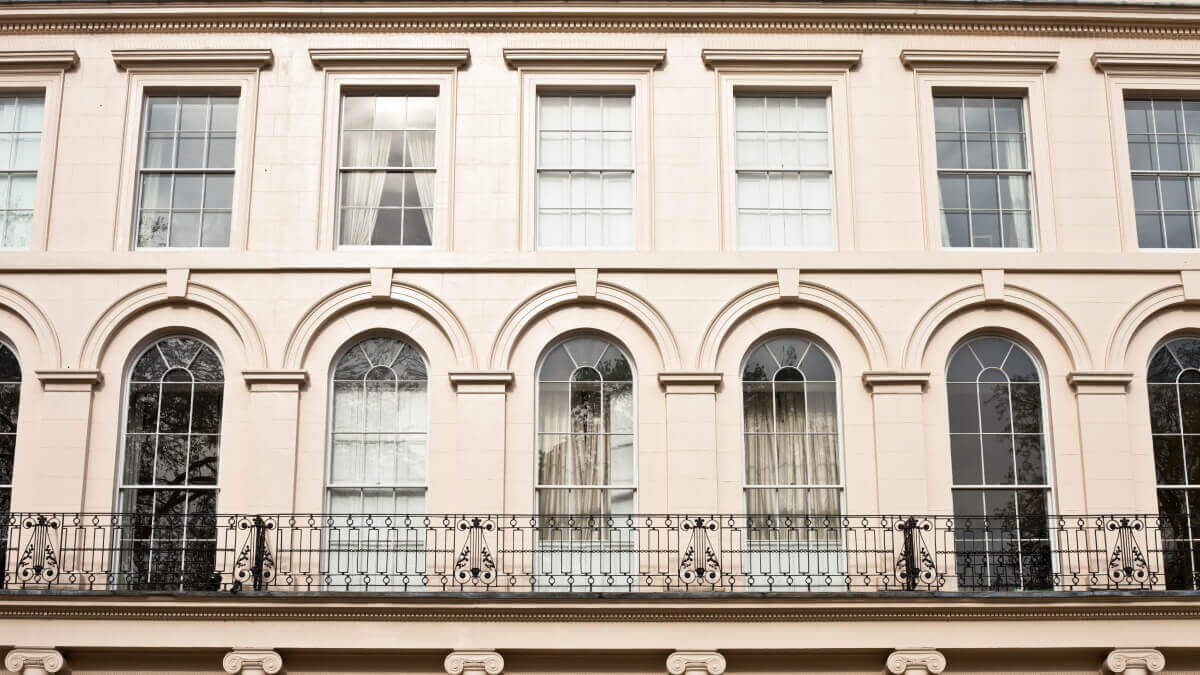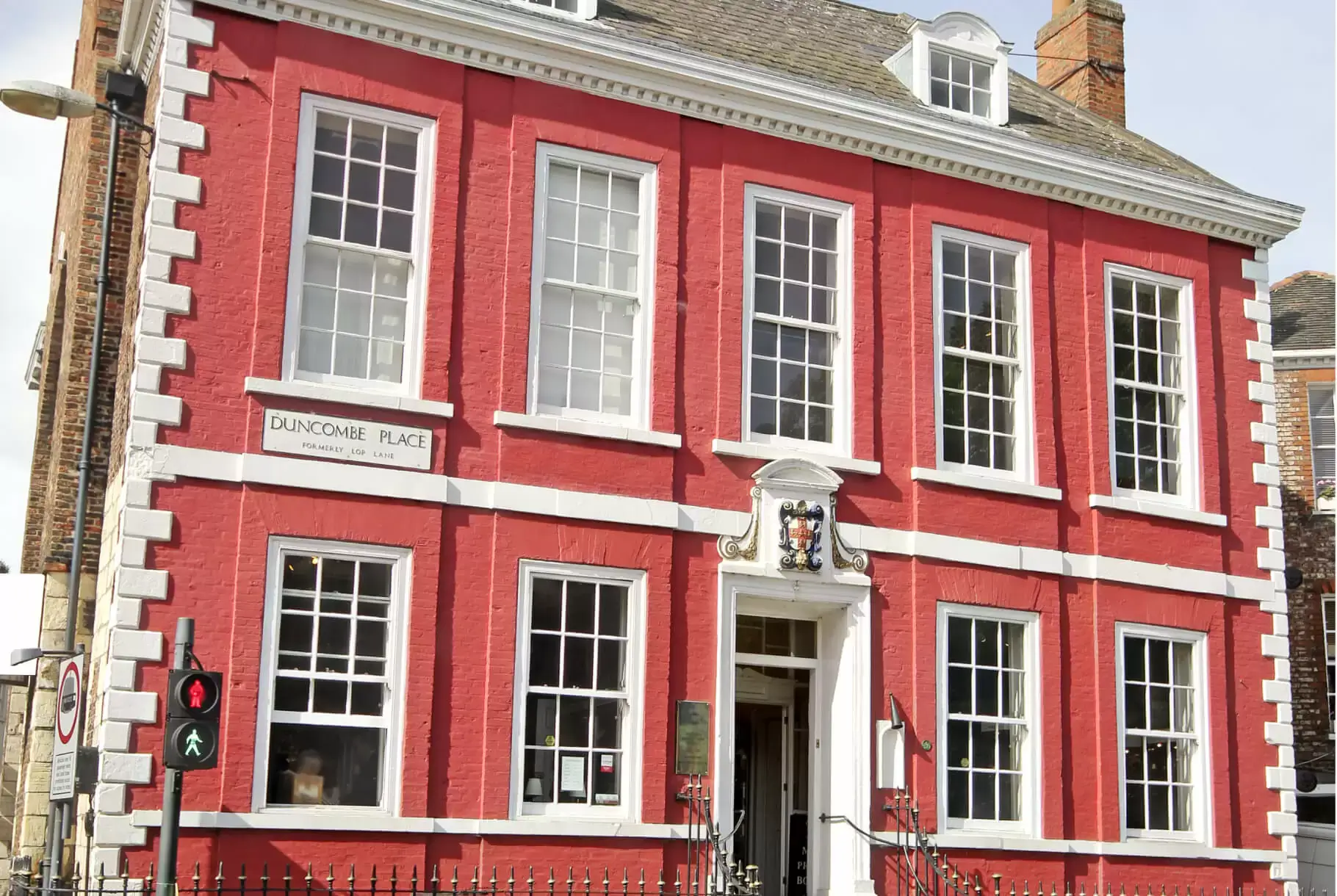The historic buildings in London with sash windows stand as the most recognizable features throughout the city. The sash windows in London serve as vital architectural features that symbolize the area’s historical past.
Sash windows have remained part of London’s architectural landscape since the late 18th century in its grand Georgian town houses and Victorian terraces.
The article explores sash windows which define London’s historic properties alongside the use of vacuum insulated glazing to meet modern performance standards.
Why Sash Windows Define London’s Historic Charm
Sash windows serve as the defining element of London’s historic architecture. Sash windows were first introduced to England between 1660 and 1700 before becoming dominant during the Georgian and Victorian architectural eras.
The windows function by moving up and down to open and close while containing several panes which distribute weight evenly across historic building structures.
London’s conservation areas as well as its listed historic buildings receive protection through specific planning regulations that safeguard original sash windows. Historic England together with local councils maintain rigorous rules which protect original building materials whenever historic structures undergo changes.
The regulations prevent the use of uPVC in place of timber frames and restrict any modifications to window dimensions.
People who live in historical buildings find it challenging to preserve original features while they work to improve thermal performance and sound insulation. The guide reveals that slimline double glazing and vacuum insulated units provide substantial energy savings while maintaining the authenticity of historic properties.
““Many of London’s historic sash windows can now be upgraded with slimline or vacuum insulated glazing—preserving their appearance while dramatically improving thermal performance.” Will Double Glazing My Windows Make Them Harder to Open?“
1. Bedford Square, Bloomsbury – A Georgian Masterpiece
The Epitome of Georgian Symmetry
The square known as Bedford Square stands as the most well-preserved Georgian square in London and was established during 1786. The town houses within the building display red-brick structures with six-over-six sash windows which inspired our business name and these particular windows follow an exact mathematical scheme across three levels.
The sash windows reveal design elements which demonstrate fundamental Georgian principles of perfect equilibrium between form and function and optimal natural ventilation and illumination.
The windows in these buildings consist of 12-by-12-inch panes with thin dividers that create an elegant panel design. Modifications to Grade I listed buildings must receive listed building consent which provides formal permission before any window changes.
The technological advancement of modern conservation-grade double glazing allows for precise replication of single-glazing appearance while achieving superior U-values compared to traditional single-glazed systems.
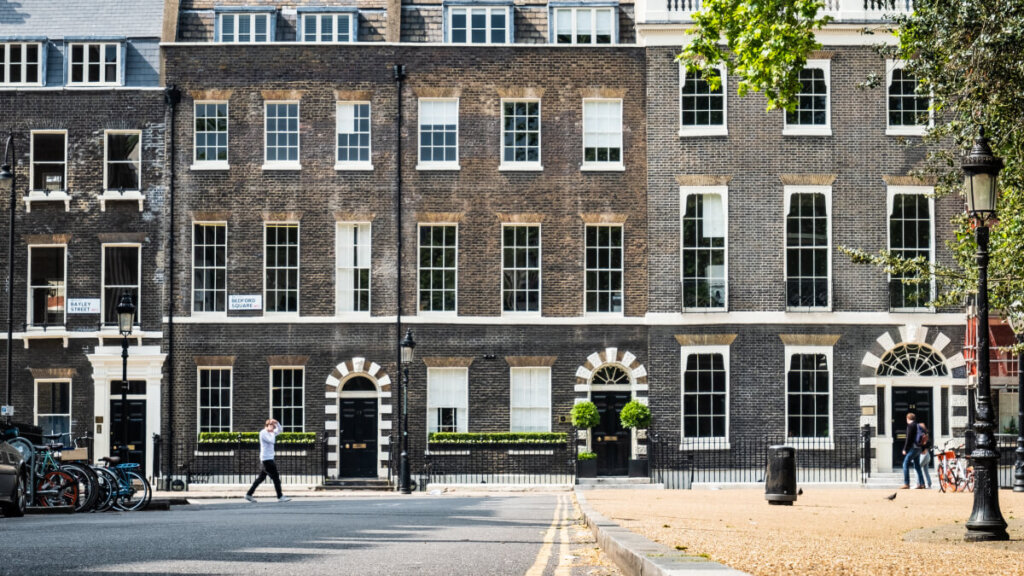
2. Royal Crescent, Holland Park – Victorian Opulence
Ornate Detailing Meets Functionality
The crescent at Holland Park features high Victorian architecture from the 1860s, but it should not be mistaken for Bath’s Royal Crescent. The sash windows here are taller and more elaborate than their Georgian predecessors often featuring arched tops and stained-glass transoms and decorative horns.
The properties within the Holland Park Conservation Area need approval from Camden Council for any window replacement which must replicate the original design and materials alongside glazing patterns. The neighbourhood requires accurate restoration to maintain its legal aesthetics and appearance. The architectural framework allows for hidden modifications to be completed.
Homeowners here select vacuum glazing systems because the technology offers windows that are only 6–8 mm thick when compared to 24 mm standard double glazing. The technical overview explains how the glazing fits inside original box frames while keeping the window weight and operation system intact.
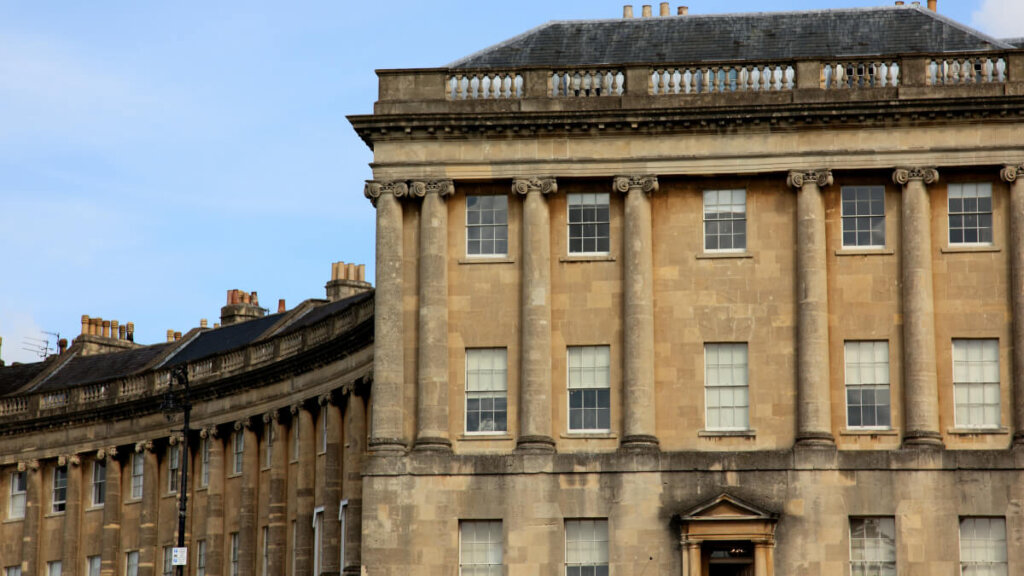
3. Regent’s Park Terraces – Nash’s Grand Vision
John Nash’s Architectural Legacy
Regent’s Park includes white stucco terraces which feature Nash’s Cumberland Terrace and Chester Terrace that he designed in the early 19th century to create some of London’s most photographed historic streetscapes.
The neoclassical design of Nash includes sash windows which extend from floor to ceiling in first-floor reception rooms.
The buildings possess Grade I or II status while English Heritage which operates as Historic England during this period has always supported careful window improvements.
The Conservation Principles from Historic England (2008) state that energy efficiency improvements should take place when they do not damage the heritage value.
The property allows for hidden renovations to be done.
The addition of secondary glazing behind original sashes together with ultra-thin double glazing systems maintains the building’s external appearance while producing up to 60% heat loss reduction.
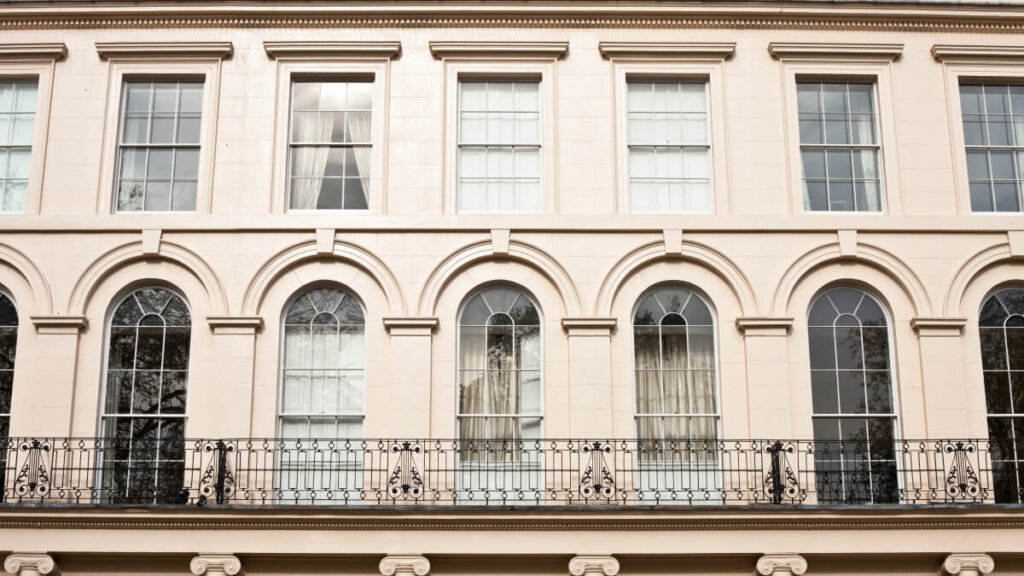
4. Notting Hill’s Pastel-Coloured Terraces
Colourful Facades, Traditional Windows
The world-famous Notting Hill pastel houses from the 1999 film display typical Italianate architectural features from the mid-Victorian period. The windows consist of two-over-two or six-over-six sash window arrangements with thin glazing bars and painted timber frames.
The homes belong to the Ladbroke Conservation Area which requires Kensington and Chelsea Council to enforce strict design regulations. The replacement windows need to contain timber frames which should match existing paint colours and follow traditional glazing bar patterns.
The community has adopted double-glazed sash windows which keep the traditional look of original windows. The counterbalance system needs to adjust for the extra weight through our article on double glazing and window operation.
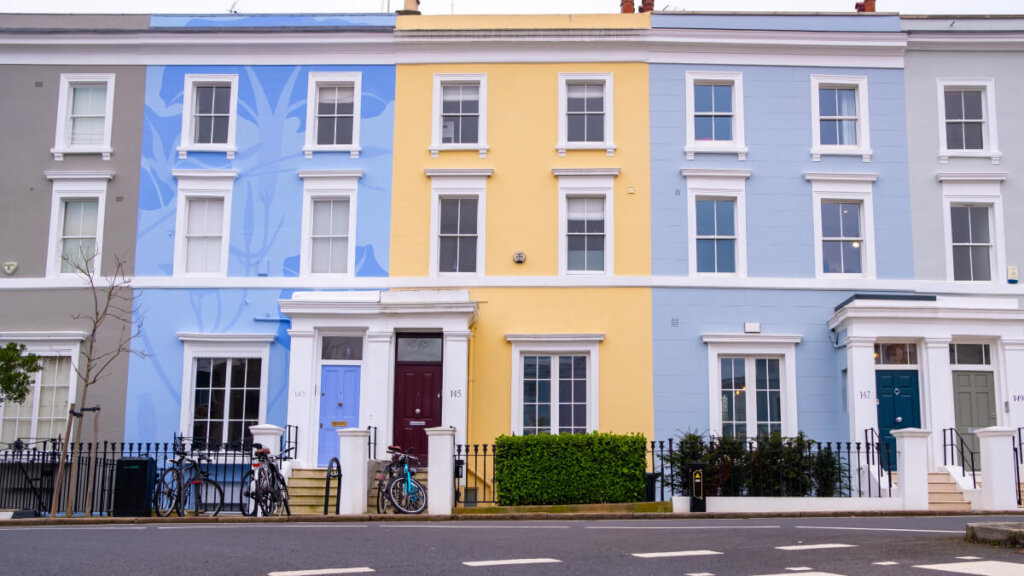
5. The Royal Hospital Chelsea – Sir Christopher Wren’s Baroque Gem
Institutional Grandeur with Period Windows
The majority of historic sash windows exist in private residences, yet institutional structures continue to showcase these windows’ enduring beauty. The Royal Hospital Chelsea, founded by Sir Christopher Wren in 1682, features symmetrical sash windows which provide light to the Great Hall and Long Wards.
The restoration work includes original windows alongside modern construction elements and historical preservation experts utilized traditional joinery and hand-blown glass to replicate 18th-century designs. Grade I listed status protects the site which requires all modifications to follow the Secretary of State’s Planning (Listed Buildings and Conservation Areas) Act 1990.
The situation demonstrates the need for preservation to adapt and grow rather than remaining fixed in its current form. Historic windows can achieve modern standards under expert professional maintenance while their original features remain intact.
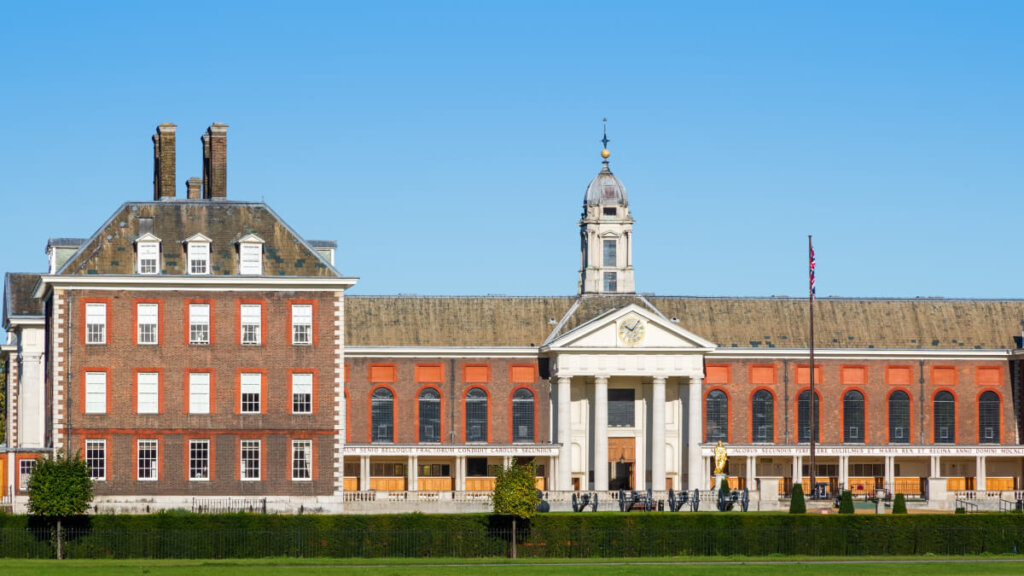
Balancing Heritage and Efficiency: What Homeowners Need to Know
The owners of historic London properties with sash windows face various challenges because they need to follow regulations while preserving historic appearance and making modern functional changes. Here’s what to consider:
- Check your listing status: Use the Historic England National Heritage List to see if your property is listed.
- The local council runs conservation officers who provide guidance about acceptable building materials and construction techniques.
- Choose the right glazing: Vacuum or slimline double glazing offers the best compromise for listed buildings.
- The original mechanisms require proper maintenance of sash cords and weights and pulleys to maintain smooth operation with heavier glass.
At Six Over Six Windows, we specialize in heritage-compliant window restoration that meets both conservation standards and modern comfort expectations. Our method preserves your home’s character while delivering improved noise reduction and thermal performance and energy efficiency.
Final Thoughts
The historic sash windows of London function as essential components which preserve the architectural essence of the city. The architectural history of London shows Bedford Square’s geometric design and Notting Hill’s romantic atmosphere which together reveal the city’s past craftsmanship and urban development.
The windows should continue to function for London residents through proper maintenance and historical preservation methods. The right solution exists to honour the past while embracing the future for Georgian town house restoration and Victorian flat upgrading.
Our complete range of sash window restoration services and technical guide on vacuum glazing for heritage properties provides additional information about period window upgrades.
For more guidance on upgrading period windows, explore our full range of sash window restoration services or read our technical guide on vacuum glazing for heritage properties.

